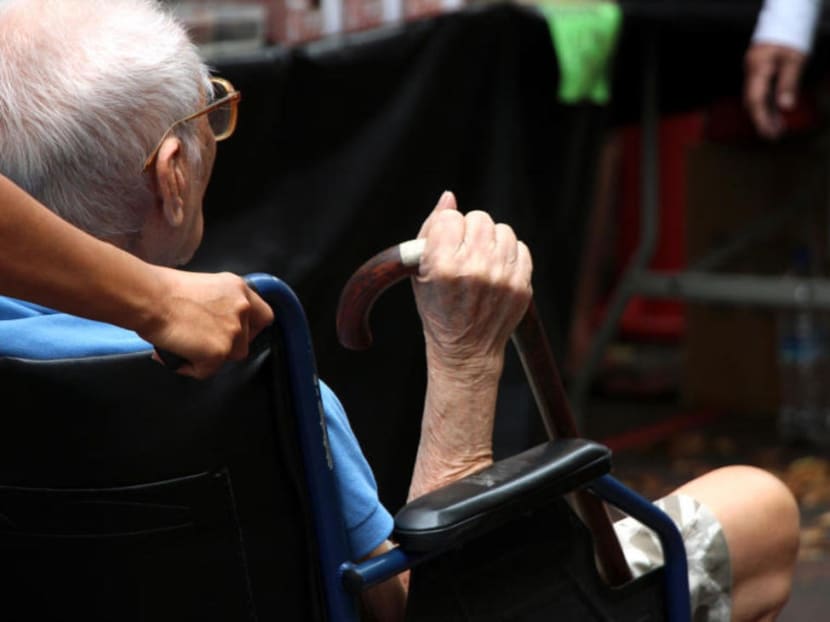Higher lifetime CareShield Life payouts a big improvement but not a complete solution: Experts
SINGAPORE — Although CareShield Life — the renamed and enhanced severe disability insurance scheme — will take care of Singapore residents' basic long-term care support, policyholders should not see it as a complete solution, said healthcare financing experts.
SINGAPORE — Although CareShield Life — the renamed and enhanced severe disability insurance scheme — will take care of Singapore residents' basic long-term care support, policyholders should not see it as a complete solution, said healthcare financing experts.
Speaking to TODAY on Sunday (May 27), after the Government accepted proposals put up by the ElderShield review committee to improve the scheme, the experts said that the bigger initial payouts of S$600 a month, up from the current S$300 or S$400, are a significant improvement, which will help the permanently severely disabled.
Lifetime payouts would provide claimants with peace of mind too, when they would previously have run out of help within five or six years.
But it comes with a price — in the form of higher premiums, which will be paid from a younger age, they noted.
Calling the lifetime payout the most significant upgrade in CareShield Life, Mr Christopher Gee, a senior research fellow in the Lee Kuan Yew School of Public Policy, said the enhancement brings the scheme in line with MediSheid Life.
"The $600 proposed is a substantial jump from the current $300 and $400. The review committee has also recommended regular adjustments to keep pace with inflation and costs of living," said Dr Jeremy Lim, who heads the Health and Life Sciences Practice in Asia at global consultancy Oliver Wyman.
While CareShield Life will be a "major pillar" of Singapore's social safety net, Dr Lim added it is part of a broader suite of schemes including CPF Life. This in turn goes with one's personal savings and family support.
Commenting that CareShield Life would act more as a relief of burden, Mr Alfred Chia, chief executive of financial advisory firm SingCapital, said that there can be "no magic number" that would satisfy everyone.
"We have a lot of clients who do not want to be in ElderShield — they say you can't even hire a maid with this amount of money, why do I need this?
"But people have forgotten that this is not meant to take care of everything," Mr Chia said, adding that the premiums — which can be paid through Medisave — must remain "generally affordable" for everyone.
Dr Joelle Fong said the increased monthly payout will probably come in handy towards engaging some domestic help to facilitate ageing-in-place for most elderly persons.
"Higher payouts will inevitably mean higher premiums; there are trade-offs. And not all disabled elderly will require expensive institutional care anyway," added the insurance economist, who is also an assistant professor based in the Lee Kuan Yew School of Public Policy.
Given the "bare-bones" objective of the scheme, Mr Chia said he hopes CareShield Life will get people to review their disability insurance and think about issues such as getting lasting power of attorney.
Although Dr Lim expects there to be public backlash over the lowering of the age range from the current 40 years to 30 years, he said the change is necessary if Singaporeans want to be assured of financial protection for their long-term care.
"People discount 'future needs', in this case the amount of monies required for long-term care and think only about the immediate 'loss'," he said.
Indeed, as Dr Fong noted that with the Health Ministry's statistics showing that only 50 per cent of Singaporeans are at risk of becoming severely disabled to the point of needing long-term care, there will always be a group who may think "What if it doesn't happen to me? Will I get any of my premiums back?"
One of the key challenges the 14-member Eldershield review committee faced was ensuring that the scheme would remain sustainable, said its chairman Chaly Mah.
Hence, based on actuarial analysis, they proposed increasing both the annual payouts and premiums by 2 per cent per annum, for the first five years.
While no one has a handle on the long-term sustainability of CareShield Life, given the amount of uncertainty around demographic trends and medical advances, Dr Lim said the right mechanisms to ensure the scheme's sustainability are in place.
Mr Gee said renaming the scheme CareShield is "positive branding", since coverage is also being extended to those who are not elderly.
To encourage the older cohorts to switch from ElderShield to CareShield Life, Mr Chia suggested a nationwide awareness campaign to educate them on the differences.
Though he admitted that it will be tough as "there will be a lot of things to factor in".
However, Dr Lim pointed out that once younger Singaporeans move to CareShield Life, the existing ElderShield pool of premium payers will shrink, and the scheme will no longer remain viable.
So he said the Government should "work out a mechanism for the existing cohort to move over to CareShield Life that is equitable to the ElderShield enrollees, the CareShield Life enrollees, the insurers and the taxpayers".












